Sri Ganga River of Life Festival 2010
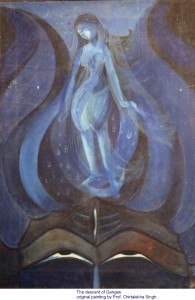
http://sivanandaonline.org/gangadussehra
Gangapujan Dashahara or Dussehra *
* The Descent of the River Ganges, Srimad Bhagavatam 5th Canto 17the Chapter Summary by HDG Srila A.C. Bhaktivedanta Swami Prabhupad.
Ganga Dussehra is the annual celebration of the most sacred of Hindu rivers, Ganga, or the Ganges. The celebration lasts for ten days from the new moon at the beginning of Jyaistha (amanta reckoning). The last day, 10 Jyaistha, is the holiest of them all (this normally occurs in June in the Gregorian calendar, or occasionally at the end of May). Devotees are expected to bathe in the Ganga. If they cannot reach the banks of the river, many devotees will use water drawn from the Ganga that is kept at home to bathe. Alternatively, the devotee will bathe in ordinary water whilst invoking Ganga by prayer. This bathing is considered to impart purity from sin.
Ganga Dussehra: Swami Sivananda’s „Hindu Fasts and Festivals“ and Swami Krishnananda’s „Spiritual Import of Religious Festivals“ have detailed descriptions of the festivals listed here. Click here for ordering details. This Spiritual Calendar is for worships held at the Divine Life Society, Rishikesh, India. Some of the dates may not necessarily hold true for other parts of the world. http://www.dlshq.org/calendar.htm
Sri Ganga Dussehara (Jayesht Shukl Dashmi) 21st June 2010 – This day is auspicious because on this day the sacred Ganges descended in the earth. It can be called birthday of Ganga. A dip in the Ganges or in any other river invoking Goddess Ganges, is beneficial and is said to be purified from ten sorts of sins. Worship of the river deity is done by incense, light, sandal wood, flowers, milk, etc.. Flour balls are fed to aquatic animals.
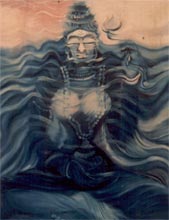
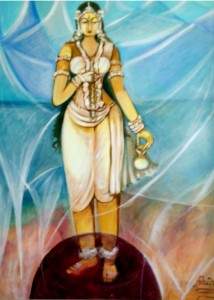
There was a ruler named Sagar. He performed Ashua Medha Yageya. God Indra stole away the ashva (Horse). Sagar’s grandson Anshuman took over the responsibility of the search of the horse. After searching all over, he reached Netherlands with 60,000 followers, where he saw god personified as Kapil saint, was under meditation and the horse was grazing nearby.
The followers of Anshuman shouted, “thief-thief”. Thereupon Kapil rishi opened his eyes and by the blazing lighting of which all were reduced to ashes. For the final cremation ritual of those dead, Bhagirath undertook severe austerities. B’rhma when pleased and asked him to demand a boon. Bhagiratha requested for the descent of Ganges on land. B’rhma agreed but expressed his apprehension if the earth could shoulder the weight and flow of the Ganges, in that case of Bhagirath should invoke God Siva. When Siva agreed to hold the fall of Ganges, B’rhma let it loose from the heavens (swarga lok). The Ganges was then interlocked in the tufts of Siva and Bhagirath’s purpose, of washing the ashes of this ancestors in the water of the Ganges, remained still. There upon Bhagirath invoked Siva, who when please, released the Ganges as river Ganges on the land. The release of the sacred water of the Ganges and its flow through different cities of India is very fortunate, pious, and auspicious for the Hindus of India.
Ganges was not merely a river. She (Goddess Ganga) was devoted to the service of lord K’rsna in the heavens (Swarge-Baikunth). She was thus very near the lord, which made Radha jealous. later cursed her to go down to earth and flow as a river. Ganga, in retaliation, also cursed Radha that you will be close to K’rsna, yet you will always imagine him far away, tolerate separatism and never be peaceful. Thus since then Gange flows as a Ganges river, under the ancient curse of Radha and under the modern curse of city pollution. In the modern times of Kaliyuga, Ganges is of utmost and importance, as according to Narade Purana, all pilgrimages were of influence in Sateya yuga then Pushkar in Treta and Kurukshtra in Dwapar Yuga.
Article by Prof. Chitralekha Singh
Dean: Institute of Visual, Performing Arts & Research, Mangalayatan University, Beswan, Aligarh. Arts Visit at: www.artistchitralekha.com, e-mail: chitralekha@artlover.com, mob . 91 9319103482
Sustainable Travel – Tashi Lhunpo Monastery

http://www.freetibet.org/events/tashi-lhunpo-monks-acton
Tashilhunpo Monastery (Tibetan: བཀྲ་ཤིས་ལྷུན་པོ་), founded in 1447 by Gendun Drup, the First Dalai Lama, is a historic and culturally important monastery next to Shigatse, the second-largest city in Tibet. It was sacked when the Gurkhas invaded Tibet and captured Shigatse in 1791 before a combined Tibetan and Chinese army drove them back as far as the outskirts of Kathmandu, when they were forced to agree to keep the peace in future, pay tribute every five years, and return what they had looted from Tashilhunpo. The monastery is the traditional seat of successive Panchen Lamas, the second highest ranking tulku lineage in the Gelukpa tradition. The „Tashi“ or Panchen Lama had temporal power over three small districts, though not over the town of Shigatse itself, which was administered by a dzongpön (prefect) appointed from Lhasa.
Located on a hill in the center of the city, the full name in Tibetan of the monastery means: „all fortune and happiness gathered here“ or „heap of glory“. Read More: > HERE <
Tashi Lhunpo Monastery is seat to the Panchen Lama, the second most important spiritual leader of Tibet. In 1447 the Monastery was founded by His Holiness the 1st Dalai Lama, Gyalwa Gendun Drup, in Shigatse, Tibet’s second largest city. It is one of the four great monasteries of Central Tibet and was supervised and looked after by the Dalai Lamas and Panchen Lamas of the Gelugpa, or Yellow Hat tradition. It has the glory of producing thousands of renowned scholars in the field of Mahayana Buddhist Philosophy and Tantra.
During the lifetime of the 4th Panchen Lama, Lobsang Choekyi Gyaltsen, there were more than 3,000 monks in the Monastery and by 1959 there were 5,000, with another 2,000 monks affiliated to the monastery living outside Tibet. The Communist Chinese invasion of Tibet in 1959 and the Cultural Revolution from 1966-80 both wreaked destruction on Tibet’s monastic institutions, which lost many precious scriptures, statues and images. Many monks were killed or imprisoned and only 250 were able to follow the Dalai Lama into exile.
www.tibettours.com , In 1972, by the order of the 14th Dalai Lama, the Tashilhunpo Monastery was re-established in Karnataka, the southern state of India. From early1980’s, entry to the general public has been allowed, although one cannot visit all the parts of the monastery, but still Tashilhunpo Monastery has become an important tourist destination in Tibet.
Tibet Reiseführer – Das Tashilhunpo-Kloster, der Sitz der Panchen Lamas aller Generationen. Das Tashilhunpo-Kloster gehört zu den unter staatlichen Denkmalschutz stehenden bedeutenden Kulturstätten Chinas. Es liegt am südlichen Fuß des Berges Nyimarie im Westen der Stadt Xigaze. Es ist das größte Kloster der gelug-Sekte in Westtibet und der Hauptort der religiösen und politischen Angelegenheiten der Panchen Lamas aller Generationen. Das Tashilhunpo-Kloster und die oben genannten drei Klöster Lhasas sind die vier berühmtesten Klöster Tibets.
Tashilhunpo bedeutet auf tibetisch „Glückliches Sumera“. Das Kloster wurde am Berghang gebaut und umfasst Hauptsutrahallen, die Qamba-Buddha-halle, die Gyina Lhakang-Halle, Gedenkhallen mit Stupas für die Panchen Lamas fünf bis neun, die Gedenkhalle Shesong Namgyi mit dem Stupa für den zehnten Panchen Lama, die Terrasse zum Ausrollen großer Buddhabilder sowie Arbeitszimmer früherer Panchen Lamas. Es gibt außerdem noch vier Zhacangs (buddhistische Kollegien), 64 Dörfer mit Wohnhäusern, in denen die Mönche, nach Herkunftsorten zusammengefasst, untergebracht waren, und 56 Gebetshallen. Read More: > www.china-guide.de <
THE STYRIAN ACADEMY EVENTS 2010
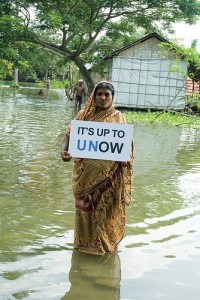
Monasteries Enviromental Himalayaprotection
www.alternative-energy-news.info
Sustainable energy is the provision of energy such that it meets the needs of the present without compromising the ability of future generations to meet their needs. A broader interpretation may allow inclusion of fossil fuels as transitional sources while technology develops, as long as new sources are developed for future generations to use. A narrower interpretation includes only energy sources which are not expected to be depleted in a time frame relevant to the human race, which can potentially also include nuclear power if it is utilized differently from the current manner. Sustainable energy sources are most often regarded as including all renewable sources, such as plant matter, solar power, wind power, wave power, geothermal power and tidal power. It usually also includes technologies that improve energy efficiency. Conventional fission power is sometimes referred to as sustainable, but this is controversial politically due to concerns about peak uranium, radioactive waste disposal and the risks of disaster due to accident, terrorism, or natural disaster. Read More: > HERE <
The 2010 United Nations Climate Change Conference will be held in Cancún, Mexico, from 29 November to 10 December 2010.The conference is officially referred to as the 16th session of the Conference of the Parties (COP 16) to the United Nations Framework Convention on Climate Change (UNFCCC) and the 6th session of the Conference of the Parties serving as the meeting of the Parties (CMP 6) to the Kyoto Protocol. Read More: > HERE <
The STYRIAN ACADEMY is a unique international European life-long learning platform organised by Graz University of Technology in cooperation with Strategic Partners. The STYRIAN ACADEMY addresses business, science and politics as well as excellent students and an interested public.
The unique feature of the STYRIAN ACADEMY is that it combines internationally recognised research across disciplines with entrepreneurial experience to provide participants with the skills and knowledge to develop innovative solutions.
The STYRIAN ACADEMY offers 2010 the following events:
Kick-Off-Event 15 June 2010
Download Programme Kick-Off-Event (PDF)
International Summer School 5-16 July 2010
Download Programme International Summer School (PDF)
International Business Seminar I, 6/7 July 2010
Download Programme International Business Seminar I (PDF)
International Business Seminar II, 7/8 July 2010
Download Programme International Business Seminar II (PDF)
Garden Talks, 7 July 2010
Download Programme Garden Talk (PDF)
In 2010 and 2011 the STYRIAN ACADEMY is dedicated to the European key topic of future Sustainable Energy Systems. The STYRIAN ACADEMY taps into the know how of top-class scientists and entrepreneurs from the European Sustainable Energy Innovation Alliance (eseia) (www.eseia.eu).
The 2010/2011 STYRIAN ACADEMY provides participants with the necessary knowledge and entrepreneurial skills to turn dwindling fossil resources and the challenge of climate change into a chance. The high level training covers the whole innovation field from sustainable energy resources to efficient infrastructure to rational provision of energy services.
- SAVE MOTHER EARTH <
- European Water Partnership (EWP)Aquawareness Day <
- ONE Drop Foundation, Cirque de Soleil <
- http://en.wikipedia.org/wiki/Alternative_Energy
- http://en.wikipedia.org/wiki/Renewable_energy
- Meet Umweltberatung Wien, friends, fans at fb <
- Meet International Year of Biodiversity 2010, friends, studies at fb <
- Meet THE WONDER OF CANCUN: LET’S FIX IT IN MEXICO! at fb <
- 100 Million Voices for a Real Climate Deal in Mexico 2010 <
SURYA JYOTHI YOGA VEDANTA CENTER
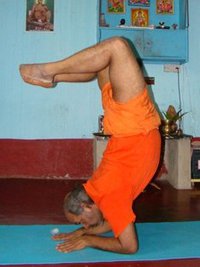
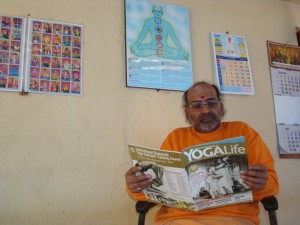
One of the senior disciples of Swami Vishnudevananda and who spent 18 years with gurus mission International Sivananda Yoga Vedanta centre as a Director in different branches. Swamiji is the author of poetry Kaliyuga Vahini in Kannada language. His poetry is coming in all major languages shortly. Swamiji is teaching yoga and Meditation and conducting Satsanga and giving spiritual guidelines to sadhakas all over the world. Swamiji is traveling across the globe in spreading Gurus message.
Sri Swami Krishnananda Saraswati Maharaj (April 25, 1922 – November 23, 2001) was a Hindu saint. He was a foremost disciple of Swami Sivananda and served as the General Secretary of the Divine Life Society in Rishikesh, India from 1958 until 2001.He was one of the most important theologians and philosophers of the 20th century. Author of more than 200 texts, Krishnananda wrote and lectured prolifically on yoga, religion, and metaphysics. His lectures, though delivered extempore (without rehearsal), were known for their structure, style and sophistication, and have been widely published in text form. The works for which Krishnananda is best known are The Realization of the Absolute, The Philosophy of Life, and The Philosophy of Religion. Read More > HERE <
Yoga is a divine knowledge taught by Rishi’s to gain Physical, Mental, Spiritual well being and to attain our Divine quality through following the eight limbs of Raja Yoga called Astanga Yoga. Yoga means union of human sole with the supreme – sole or Almighty god means join Divine & human spirit. This is a Process which liberates the human soul from the bondage of Maya (attachment to worldly things and makes the sole free from rebirth) Only Maya is a strong bondage.
The ultimate Aims of Yoga practice is to get Self –Realization to merge our tiny spark of soul in the ocean of God consiousness.To remove our ignorance due to Maya, to know our own ego, to get freedom from bondages of birth and deaths, to remain in permanent eternal peace, bliss and joy and to realize the complete ultimate knowledge of everything in the universe we should practice this techniques with devotion, faith and proper understandings . Without devotion we never reach any where in this practice.
Love yoga? Want to get started? Become a teacher?
SURYA JYOTHI YOGA CENTRE offers an amazing range of yoga retreats and trainings for people at all levels of experience.
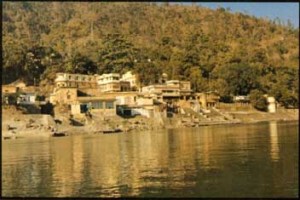
Sivananda Ashram (Headquarters of The Divine Life Society) Rishikesh, Himalayas, India.
The Divine Life Society was founded by the great Saint and Sage of modern times, Swami Sivananda, in the year 1936. It was founded for resuscitating the higher values of life beyond the limitations of perceptional and cognitional evaluations of life. The Founder’s main intention was to awaken humanity towards the ways and means of imbibing in one’s life the characteristics of Ultimate Reality, veritably God-realisation.
Towards this end a vigorous disciplinary process has to be undergone by imbibing in one’s personal life the other associated values, such as the social, ethical, and austere principles, all which have to be set in tune harmoniously with everything that is considered as part of one’s life at any stage of one’s existence in this world. This is briefly the great vision of the Founder, Swami Sivananda.
All material on this website is copyright. This website is independent of the Divine Life Society.
- SWAMI SIVANANDA – YOGA IN DAILY LIFE <
- Ayurveda – H.H. Swami Sivananda Maharaj <
- H.H. SWAMI SIVANANDA – SELFLESS SERVICE <
- Meet Surya Jyothi Yoga Vedanta Center, studies, friends at fb <
- Meet Swami Sivananda – Divine Life Society, studies, friends at fb <
- AN APPEAL FOR YOGA GURUKULAM CONSTRUCTION PROJECT at fb <
Muhammad Yunus: Building Social Business
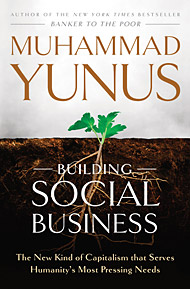
www.businessweek.com/june 2010
Muhammad Yunus (Bangla: মুহাম্মদ ইউনুস, pronounced Muhammôd Iunus) (born 28 June 1940) is a Bangladeshi banker, economist and Nobel Peace Prize recipient. He previously was a professor of economics where he developed the concepts of microcredit and microfinance. These loans are given to entrepreneurs too poor to qualify for traditional bank loans. Yunus is also the founder of Grameen Bank. In 2006, Yunus and the bank were jointly awarded the Nobel Peace Prize, „for their efforts to create economic and social development from below.“ Yunus himself has received several other national and international honors. He is the author of Banker to the Poor and a founding board member of Grameen America and Grameen Foundation. Read More: > HERE <
This third book by Professor Yunus, following Banker to the Poor and Creating a World Without Poverty, is dedicated solely towards the concept of social business, its implementation, and its maintenance. Social business is an innovative business model which promotes the idea of doing business in order to address a social problem, and not to maximize profit. As the title suggests, this complement to traditional capitalism truly can serve humanity’s most pressing needs, especially poverty. Each and every social business creates employment, good working conditions, and of course, addresses a specific social ill such as lack of education, healthcare, and good nutrition.
In simple terms, a social business is a non-loss, non-dividend company dedicated entirely to achieve a social goal. In social business, the investor gets his investment money back over time, but never receives dividend beyond that amount. The Grameen Bank is a prime example of social business, with the Grameen borrowers themselves being its shareholders!
Building Social Business consists of case studies, anecdotes, and solid advice from Professor Yunus himself. This “Social Business Manual” is a must read for anyone who wants to use his or her creativity to make a positive impact in their neighborhood, town, country, and world.
The Nobel Peace Prize-winner shows how the social business model can harness the entrepreneurial spirit to address poverty, hunger, and disease
Muhammad Yunus, the practical visionary who pioneered microcredit and, with his Grameen Bank, won the 2006 Nobel Peace Prize, has developed a visionary new dimension for capitalism which he calls „social business.“ By harnessing the energy of profit-making to the objective of fulfilling human needs, social business creates self-supporting, viable commercial enterprises that generate economic growth even as they produce goods and services that make the world a better place.
Company Overview – Grameen Bank provides credit to rural poor in Bangladesh. It offers small loans for women. The company also provides training programs to individuals in the forms of Grameen basics course, exposure programs, international dialogue programs, research, internships, workshops, and media. It offers its services to villages of Bangladesh. Grameen Bank was founded in 1976 and is based in Dhaka, Bangladesh.
Jean Ziegler: The Empire of Shame
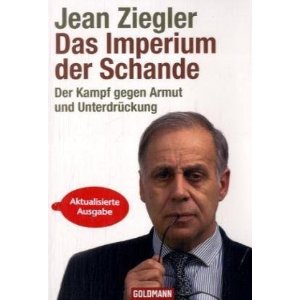
www.unwatch.org/The Right of Food
Jean Ziegler (born April 19, 1934) is a former professor of sociology at the University of Geneva and the Sorbonne, Paris. He was a Member of Parliament for the Social Democrats in the Swiss federal parliament from 1981 to 1999. Nominated by Switzerland, he was the United Nations Special Rapporteur on the Right to Food from 2000 to April 2008. On 26 March 2008, he was elected for one year into the Human Rights Council Advisory Committee. Despite objections from UN Watch he received 40 out of 47 votes to finish first in a field of seven candidates. He is also member of the advisory board of the human rights organization Business Crime Control. Read More: > HERE <
The Codex Alimentarius (Latin for „food code“ or „food book“) is a collection of internationally recognized standards, codes of practice, guidelines and other recommendations relating to foods, food production and food safety. Its name derives from the Codex Alimentarius Austriacus. Its texts are developed and maintained by the Codex Alimentarius Commission, a body that was established in 1963 by the Food and Agriculture Organization of the United Nations (FAO) and the World Health Organization (WHO). Read More: > Here <
Jean Ziegler: „This World Order is not just murderous, it is absurd“ – Jean Ziegler is a senior professor of sociology at the University of Geneva and the Sorbonne, Paris. He is one of the leading protagonists in the world for the anti-globalization movement and has taken a continued stand for human rights, the right to food and a decent livelihood for all people. In 2000, he was appointed by the United Nations Commission on Human Rights as the UN Special Rapporteur on the Right to Food. He kept this position until March 2008 in spite of much hard criticism from the neoliberal leaders of the U.S. and the UN for his categorical stand for equal rights for all people. His continued fight against poverty, hunger and chronic malnutrition in the world has been a constant embarrassment to the West.
He is now the Swiss member of the UN Human Rights Council. His is one of the very few voices heard on the international scene speaking out loudly against the criminal financial system that has put the world in its present tailspin with hunger and lack of human rights, devastating a continually increasing mass of the world’s 6.6 billion population. Unfortunately he is not very well known in the Anglophone world, where, for obvious political reasons, his humanitarian message is hushed up. He says in „Empire of Shame“: „One thing is certain: world agriculture, in the current state of productivity, could feed twice the number of today’s global population. So it is not a matter of fate: hunger is man made.“
„Empire of Shame – A Conversation with Jean Ziegler“ He has written several books on the lack of justice in the world, condemning the vicious global power system that allows close to a billion people to be the chronic victims of hunger and permanent malnutrition and denouncing crimes committed in the name of global finance and capitalism.
See: Hunger in the Midst of Plenty, By Girish Mishra. FULL ARTICLE: * HERE *
> Books from Jean Ziegler by Amazon < / Codex Alimentarius Video
In your opinion, has anyone measured the scale of the impact of this crisis on the South? Jean Ziegler. „When the rich lose weight, the poor die,“ says a proverb. World hunger is increasing at a breathtaking rate. Every five seconds a child under ten dies of hunger in the world and 100 000 people die every day from hunger or its immediate after-effects.
Since 2000, the West said there was no money. However, on October 12, at the Élysée Palace, in three and a half hours, the 27 EU countries released €1 700 billion for credit to be used between banks and to raise the floor of pure capital for the banks from 3 % to 5%. 1% of these €1 700 billion would suffice to eliminate the eight tragedies afflicting the Third World countries. This world order is not only mortal, it is absurd.
- IRRI Rice Research Institute & Conference <
- Codex Alimentarius – Food Book & Food Code <
- PALMOIL – Biofuel, Climate Change, Food, etc. <
- http://www.bhookh.com , www.foodrelief.org
- http://en.wikipedia.org/world_food_price_crisis
- Jean Ziegler: The Hatred for the West <
- www.worldproutassembly.org/archives <
- Jean Ziegler: About World Hunger <
- http://en.wikipedia.org/wiki/Food_vs._fuel
The Fair Trade Footballs of Pakistan

www.fairtrade.org.uk/sportsballs
FAIR TRADE SPORTS BALLS (UNHEP)
KS3 Citizenship – Fair Trade Video
Sialkot (Urdu: سیالکوٹ) is a city situated in the north-east of the Punjab province in Pakistan at the foothills of the snow-covered peaks of Kashmir near the Chenab river. It is the capital of Sialkot District and, formerly, it has been the winter-capital of the State of Kashmir. The city is about 125 km (78 mi) north-west of Lahore and only a few kilometres from Indian controlled Jammu. The recorded history of Sialkot covers thousands of years. Sialkot has, since its foundation, changed hands from Hindu, Buddhist, Persian, Greek, Afghan, Turk, Sikh and British rule to that of present-day Pakistan. Read More: > HERE <
Fair Trade is an organized social movement and market-based approach that aims to help producers in developing countries obtain better trading conditions and promote sustainability. The movement advocates the payment of a higher price to producers as well as social and environmental standards. It focuses in particular on exports from developing countries to developed countries, most notably handicrafts, coffee, cocoa, sugar, tea, bananas, honey, cotton, wine, fresh fruit, chocolate and flowers. Read More: > HERE <
An innovative company with history – SELECT Sport is one of the world’s leading manufacturers of hand-sewn balls and produces approx. 2 million balls a year. SELECT Sport is recognised as an innovator in quality balls and is represented by its own sales network or distributors in large parts of the world. We export to a total of more than 50 countries.
SELECT’s head office is located in Glostrup near Copenhagen. Our balls are produced in Pakistan by Anwar Khawaja Industries (AKI). We have never used child labour to produce our balls. SELECT’s workers and their families receive free medical assistance and medication through our SAHEP programme. This programme also provides education and schooling for all of the workers’ children.
A short look at how footballs are really made.
FIFA standard balls are hand-stitched in Pakistan for Fair Kick Soccer. In a size 5 ball, there are 690 stitches. As each of the five-sided pieces of polyurethane artificial leather are stitched to the others, the ball’s sphere gradually closes. The last stitches are done ‘blind’. That is, they use a pair of long needle-pullers, threading between stitches that they have already made, because they cannot get their hands inside the ball. At the same time, they have to be careful that they do not puncture the butyl air bladder inside. > http://de.fifa.com/<
Interfaith Center: Gala Dinner with Yusuf Islam
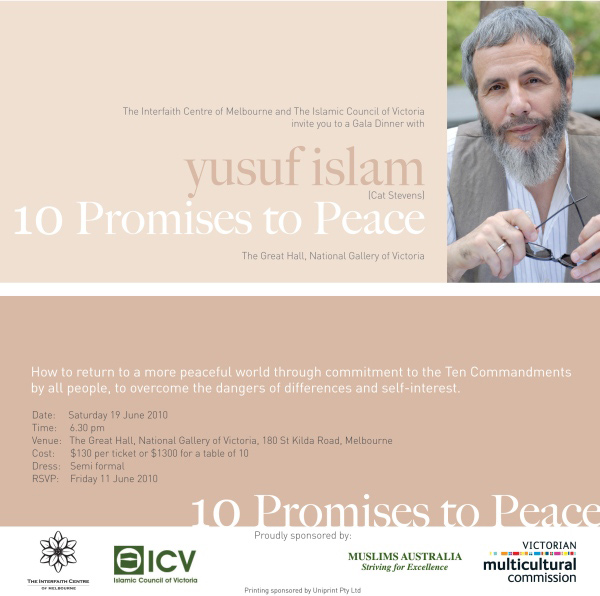
There have been several meetings referred to as a Parliament of the World’s Religions, most notably the World’s Parliament of Religions of 1893, the first attempt to create a global dialogue of faiths. The event was celebrated by another conference on its centenary in 1993. This led to a new series of conferences under the official title „Parliament of the World’s Religions“. Read More: > HERE <
Yusuf Islam (born Steven Demetre Georgiou; 21 July 1948 in London, England),commonly known by his former stage name Cat Stevens, is a British musician. He is a singer-songwriter, multi-instrumentalist, educator, philanthropist, and prominent convert to Islam. Read More: > HERE <
The Interfaith Centre of Melbourne emphasizes the development of events and programs that involve and attract youth who are searching for deeper meaning in their lives, and who show deep concern for the future of humanity and the planet.
Building Harmony – The State of Victoria is one of Australia’s most multi-cultural States. It comprises people from more than 208 countries. Victorians speak over 150 languages and follow more than 100 faiths. Whilst there are no large-scale community relation’s conflicts, the report tabled in the Commonwealth Parliament in November 2000, „Conviction with Compassion: A Report into Freedom of Religion and Belief“, suggests that elements of racism and religious intolerance remain endemic in our society. Our broader community is not always aware of the level of distress and harm experienced by members of minority groups.
Combating prejudice and assisting people to overcome disadvantage are two of the Victorian Government’s key priorities. Our mission and educational/cultural programs seek to complement the Victorian Government’s promotion of racial and religious tolerance, and issues of social justice.
YTDR – Yogi Tsoru Dechen Foundation Miami
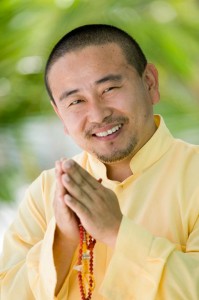
Miami (pronounced /maɪˈæmi/ or /maɪˈæmə/) is a major city located on the Atlantic coast in southeastern Florida. Miami is the county seat of Miami-Dade County, the most populous county in Florida. It is the principal city and the center of the South Florida metropolitan area, which had a 2008 population of 5,414,712; ranking 7th largest in the U.S.In 2008, the population of the Miami urbanized area had increased to 5,232,342, becoming the fourth-largest urbanized area in the United States, behind New York City, Los Angeles, and Chicago. Miami is a well-known global city due to its importance in finance, commerce, culture, media, fashion, education, film, print media, entertainment, the arts and international trade.Known as The Gateway to the Americas, Miami is an international center for entertainment, education, media, music, fashion, film, culture, print media, and the performing arts. Read More: > HERE <
Tibet (Tibetan: བོད་; Wylie: bod, pronounced [pʰø̀ʔ]; Chinese: 西藏; pinyin: XÄ� Zàng) is a plateau region in Asia and a disputed territory, north of the Himalayas. It is home to the indigenous Tibetan people, and to some other ethnic groups such as Monpas and Lhobas, and is inhabited by considerable numbers of Han and Hui people. Tibet is the highest region on earth, with an average elevation of 4,900 metres (16,000 ft). It is sometimes referred to as the roof of the world. Read More: > HERE <
The Venerable Tulku Tsori Rinpoche is the founder and spiritual leader of the Yogi Tsoru Dechen Rinpoche Foundation based in Miami, Florida. He is recognized as a Lama – a term reserved for senior members of the Tibetan Order.
Lama Tulku Tsori Rinpoche (aka Tulku Karma) was born in a Tibetan refugee settlement in India in 1974. During his childhood, he was recognized as the incarnation of Yogi Tsoru Dechen Rinpoche of Chamdho, Tibet. At the age of seven, he was received at Namdroling Monastery in Bylakuppe, India where he completed his education.
Dalai Lama teaching at TCV Dharamsala India
Rinpoche has devoted his life to champion humanitarian efforts. He travels throughout the world teaching the Buddha Dharma (Path of Awakening), and speaking on the greater good of empowering humanity and revitalizing society. Presently, Rinpoche is overseeing various charitable programs including construction of the Children’s Monastery in Mainpat, India while continuing to help establish new Dharma centers throughout the world.
IRCICA – Int. Symposium of muslim Calligraphy
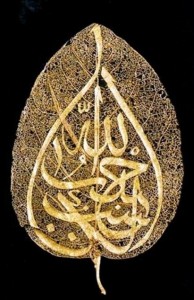
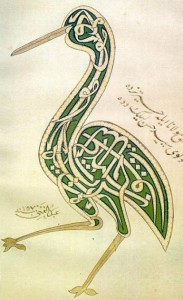
http://ilmalinsaan/islamic-calligraphy
Calligraphy, by definition, the art of „beautiful writing” is one of the oldest artistic and literary forms known to mankind. Ancient scribes writing on papyrus, clay tablets, and vellum strove to make their writing very special. Monks in monasteries and medieval professional scribes brought their writing to a high form of artistic expression as they inscribed scriptures, sacred writings, and other works of literature and poetry. Scribes and calligraphers have that same passion today as they endeavor to make the written word an artistic treasure to be admired and treasured. Calligraphy (from Greek κάλλος kallos „beauty“ + γραφή graphẽ „writing“) is a type of visual art. It is often called the art of fancy lettering. A contemporary definition of calligraphic practice is „the art of giving form to signs in an expressive, harmonious and skillful manner“. The story of writing is one of aesthetic evolution framed within the technical skills, transmission speed(s) and materials limitations of a person, time and place . Read More about Calligraphy in East & West: > HERE < .
IRCICA is an international institution active in the fields of research, publishing, documentation and information. Its mandate covers multifarious themes in the fields of the history of Muslim nations, history of arts and sciences in Islam, and other subject areas in Islamic culture and civilisation. By means of these activities, IRCICA aims at studying and better introducing the Islamic culture and civilisation throughout the world and acting as a catalyst for research and cooperation in these areas to promote mutual understanding between Muslims and with other nations and cultures of the world.
IRCICA started its activities in 1980 as the first subsidiary organ of the Organisation of the Islamic Conference (OIC) concerned with culture. The headquarters of IRCICA are located in the three buildings named Seyir Pavilion, Cit Qasr and Yaveran Building in the historical Yildiz Palace in Besiktas, Istanbul. These buildings were allocated to the Centre by the Government of the Republic of Turkey.
Prof. Dr. Ekmeleddin �hsano�lu, Secretary General of the Organisation of the Islamic Conference, was the Director General of IRCICA from 1980 to December 2004. Prof. �hsano�lu was elected Secretary General of OIC by the 31st Islamic Conference of Foreign Ministers (Istanbul, 14-16 June 2004). Dr. Halit Eren, who was the Deputy Director General, was appointed Director General of IRCICA as of 1st January 2005. INTERNATIONAL SYMPOSIUM OF FEMALE CALLIGRAPHERS June 4th -6th, 2010: > HERE <
Muslim Heritage: Professor Al-Hassani on the History Channel. More Muslim Heritage Videos: > HERE <
Centre’s Programs – The scope of IRCICA’s work plans expanded steadily over the years, as completed activities were replaced by new projects and ongoing ones grew to cover new themes of interest. The majority of research projects are implemented on a long term basis, in several successive and/or simultaneous stages related to various aspects of a given theme or involving various types of activities, such as data collection and treatment, contacts and cooperation with the Member States, institutions and organisations concerned, convening of scholarly meetings, editing, publishing, etc. From its earliest years onwards, the Centre disseminated the results of its activities in the OIC Member States as well as in academic, cultural and artistic circles world-wide by its publications, paper presentations at conferences, exhibitions of documents and illustrations, communication and cooperation with universities and cultural institutions throughout the world, and by offering library and archive services to researchers and students. This section outlines the activities carried out by IRCICA within the framework of its programs and projects, from its establishment in 1980 until the beginning of 2000.
- AVICENNA, UNANI MEDICINE & MATERIA MEDICA <
- ISLAMIC PLANT MEDICINE AND HISTORY <
- Meet HATTAT TAHS�N KURT, friends, fans at fb <
- Meet CALLIGRAPHY, studies, friends, fans at fb <
- Meet Council for a Parliament of the World’s Religions (CPWR) at fb <
LeadEarth – Environmental & Int. Development

Jews, Christs & Muslims ~ Intercultural Dialog
Isralestinian Ghandis – Meditation for Peace
Israel (Hebrew: יÖ�שÖ�ׂרÖ�אÖ�ל, YisrÄ�’el; Arabic: إِسْرَائِيلُ, IsrÄ�’Ä�l), officially the State of Israel (Hebrew: About this sound מÖ�דÖ�ינÖ�ת יÖ�שÖ�ׂרÖ�אÖ�ל (help·info), MedÄ�nat YisrÄ�’el; Arabic: دَوْلَةُ إِسْرَائِيلَ, Dawlat IsrÄ�’Ä�l), is a country in Western Asia located on the eastern shore of the Mediterranean Sea. It borders Lebanon in the north, Syria in the northeast, Jordan and the West Bank in the east, the Gaza Strip and Egypt on the southwest, and contains geographically diverse features within its relatively small area. Israel is the world’s only predominantly Jewish state, with a population of 7.5 million people, of whom 5.7 million are Jewish. Arab citizens of Israel form the country’s second-largest ethnic group, which includes Muslims, Christians, Druze, and Samaritans.
The modern State of Israel has its historical and religious roots in the Biblical Land of Israel, also known as Zion, a concept central to Judaism since ancient times. Political Zionism took shape in the late-19th century and the Balfour Declaration of 1917 formalized British policy preferring the establishment of a Jewish state. Following World War I, the League of Nations granted Great Britain the Mandate for Palestine and the responsibility for establishing „the Jewish national home“ within it. Read More: > HERE <
Tamil Nadu (Tamil: தமிழ்நாடு „Country of the Tamils“, pronounced [t̪ɐmɨɻ n̪aːɽɯ]( listen)) is one of the 28 states of India. Its capital and largest city is Chennai (formerly known as Madras). Tamil Nadu lies in the southernmost part of the Indian Peninsula and is bordered by the States of Puducherry (Pondicherry), Kerala, Karnataka and Andhra Pradesh. It is bound by the Eastern Ghats in the north, the Nilgiri, the Anamalai Hills, and Palakkad on the west, by the Bay of Bengal in the east, the Gulf of Mannar, the Palk Strait in the south east, and by the Indian Ocean in the south. Read More: > HERE <
Leadearth is an 8 months leadership program of Environmental and Social projects in Israel and India. LeadEarth is an eight-month leadership program for young professionals who wish to gain experience in the fields of social action, community empowerment and environmental and international development.
The LeadEarth program was designed to foster social entrepreneurs in the fields of environmental sustainability and informal education and enable them to acquire the skills, knowledge and hands-on experience to initiate, develop and lead projects in their own communities and in developing countries.
LeadEarth offers professional training, personal growth, self empowerment and a unique opportunity to initiate, develop and lead community projects.
The LeadEarth program includes a five-month training program in Israel followed by three months of field work in India and a closing seminar to prepare participants for further professional work and studies.
During the first five months of the program, participants live on Kibbutz Ein Zivan, where you will study and volunteer. Here you will receive professional training in the fields of sustainable ecological development and project management.
In the second part of the program, volunteers will travel to the Tamil Nadu state of India where you will live in an international volunteer community and work with grassroots NGOs, including the Center for Culture and Development (CCD) and Sadhana Forest. These organizations, together with an Adam LeAdam professional team leader, guide the volunteers in the initiation, development and operation of community projects, while focusing on promoting environmental awareness through informal education.
As LeadEarth graduates, you will receive ongoing support to enable you to sustain social and environmental involvement and activities in India or in your home community.
As a participant of the program you will: Prepare for further studies and professional job opportunities in the fields of environmental studies, ecological sustainability, international development and project management. Gain knowledge of Israel and India through living and working with local communities. Work and train with the next generation of international, young, Jewish, social entrepreneurs. Receive professional training in sustainable living including: clean energy, building planning, composting, chemical-free products and organic farming. Undergo survivor training in order to learn to deal with uncertainty in outdoor conditions. Receive accreditation from leading NGOs in Israel and India.
- Meet Lead Earth friends, fans at fb <
- Meet Isralestinian Gandhis , friends, fans at fb <
- Meet United Israel Peace, friends, fans at fb <
- Meet M.K. Gandhi Institute for Nonviolence, studies, friends at fb <
- Council for a Parliament of the World’s Religions (CPWR)<
Kundalini Yoga Workshop & Swami Dhirendra
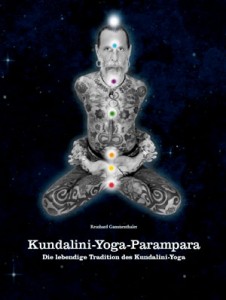
www.hinduism.co.za/Brahmacharya
http://www.sanandayoga.com/workshop
http://archives.digitaltoday.in
Brahmacharya – Sri Swami Sivananda
Brahmacharya (pronounced [brʌmatʃərɪə], Devanagari: ब्रह्मचर्य) whose literal meaning is under the tutelage of Brahman refers to a period of spiritual education in the traditional scheme of life in Hinduism that takes place during the teenage years. This period of time in which the student becomes inculcated in the mystical doctrine contained within the Upanishads is characterised above all else by the practice of strict celibacy. As such, in non-Hindu traditions (see nastika) Brahmacharya denotes a mode of life devoted to spiritual endeavour in which sexual continence is the guiding factor. A Brahmachari therefore is a male (and brahmacharini a female) who observes sexual abstinence unless intentionally procreating. These characteristics correspond to Western notions of the religious life as practised in monastic settings. Read More: > HERE <
Just like his life and his death the origin of Swami Dhirendra Brahmachari is shrouded in mystery. Some sources say that he was born in a respected Brahmana family of Chandpura, a small village in Bihar in Northern India. Others say that he came from a village in Kashmir. There are no records of the day of his birth, and during his lifetime the public was speculating about his real age. He never talked much about his past, but when he remebered his early childhood he used to say that he was a wild and naughty boy with a great sense for adventure, which often put him in difficult and dangerous situations. When he was twelve years old he started to read the Bhagavad Gita and he was deeply impressed when Krishna says to Arjuna: “The Yogin is verily superior to the Tapasvins (those observing austerities), Jnanins (the knowledge-ables) and Karmakandins (those who perform the ceremonial rites). Therefore you should try to become a Yogin!” So he decided to become a Yogi. From this moment he pursued this arduous path with great devotion and deep interest, and he left his family to search for a true Guru. During these years of wandering he met many masters and holy men, but in spite of his ardent efforts it seemed impossible to find the one personal Guru. Many so-called masters turned out to be charlatans or they were demanding a certain hairstyle or dress from him, changes which the stubborn young man wouldn`t accept.
After years of restless search he ended up in great poverty, and he seemed to be stranded. He said about this dark period of desperation: “I had completely lost the idea of a Guru, my mind was absolutely empty. But only when life becomes dark and black like a slate, you can start to write something new. Only where there is absolute emptiness you can fill in something new. Only when his own ideas are wiped out, man is ready to perceive and accept the Absolute. It is a balance between complete devotion and the openness for the Divine or even for what you can call its opposite.” While this struggle between light and darkness was in full swing, he finally met his Guru Maharshi Kartikeya, whose Ashram stood at Gopal-Khera, about twelve miles from Lucknow. There his Guru initiated him into the untold secrets of Yoga. He practiced Pranayama in an underground cave and reached a state of perfect mental equilibrum, which made him enter the realms of higher Yoga. Now he was a Swami, a Siddha and Yoga-Master, and he was directed by Maharshiji to propagate the Yogic Kriyas.
It was in the Bengal capital Calcutta that his first work “Yogic Sukshma Vyayama” was published in Hindi in 1956. Thereafter he came to Delhi and people of all walks of life and from all over the world were attracted to him to learn the yogic practices that he demonstrated.
He taught the first Prime Minister of India, Jawaharlal Nehru, and was the yogic mentor to his daughter Indira Gandhi and her family. 1970 he published his second book “Yogasana Vijnana”, doubtless the best work ever about the correct practice of Yoga-Postures. Because of his extraordinary powers and his charismatic personality he became the counsellor and trustee of the then Prime Minister Indira Gandhi and therefore a political issue. He was running big Ashrams in Delhi, Jammu, Katra and Mantalai (J & K), and thousands of people from all over the world were eager to learn from him.
In the year 1981 he was asked by some journalists if he would leave his body as old as his own Guru Maharshi Kartikeya, who entered Maha-Samadhi 1953 in the age of 336 years, while he was meditating with his favourite Chelas. He answered: “I would gladly do that, if I shouldn`t die in a plane-crash.”
H2Oil: Oil & Tar Sands The Documentary

www.indigenouspeoplesissues.com
Oil sands, also known as tar sands, or extra heavy oil, are a type of bitumen deposit. The sands are naturally occurring mixtures of sand or clay, water and an extremely dense and viscous form of petroleum called bitumen. They are found in large amounts in many countries throughout the world, but are found in extremely large quantities in Canada and Venezuela. Oil sands reserves have only recently been considered to be part of the world’s oil reserves, as higher oil prices and new technology enable them to be profitably extracted and upgraded to usable products. Oil sands are often referred to as unconventional oil or crude bitumen, in order to distinguish the bitumen extracted from oil sands from the free-flowing hydrocarbon mixtures known as crude oil traditionally produced from oil wells. Read More: > HERE <
What Are Tar Sands? – Tar sands (also referred to as oil sands) are a combination of clay, sand, water, and bitumen, a heavy black viscous oil. Tar sands can be mined and processed to extract the oil-rich bitumen, which is then refined into oil. The bitumen in tar sands cannot be pumped from the ground in its natural state; instead tar sand deposits are mined, usually using strip mining or open pit techniques, or the oil is extracted by underground heating with additional upgrading. See the Photos page for additional photos of tar sand and tar sand mining. FULL ARTICLE: > TAR SANDS BASICS < (Basic information on tar sands technology, resources, and issues of concern.)
Greenhouse gas emissions from tar sands production are three times those of conventional oil and gas production [currently tar sands production emits 27 megatonnes per annum and is expected to rise to 108-126 megatonnes by 2015]. Thus, the tar sands are now poised to become Canada’s largest single emitter of greenhouse gas, compounding this country’s contribution to global warming. Additionally, tar sands production is expected to multiply as much as four to five times by the year 2015 to meet growing demands in the U.S. As a consequence, conservative estimates show that greenhouse gas emissions from the tar sands could well leap from 27 to 126 million tonnes by 2015.
Read more — http://www.tarsandswatch.org/global-warming
- The Real Avatar: Story of a Sacred Mountain <
- WE ARE ONE – A Celebration of Tribal People <
- Meet H2Oil: The Documentary, friends, fans at fb <
- Meet Survival International, friends, fans at fb <
- Indigenous Peoples Issues and Resources, friends, fans at fb <
- Meet Tom BK Goldtooth, friends, fans at fb <
- 100 Million Voices for a Real Climate Deal in Mexico 2010 <
KALARIPPAYAT TRAD. (kalari) MARTIAL ART
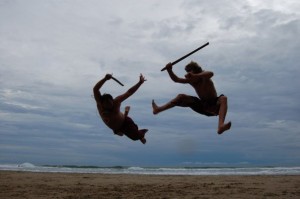
KALARIPPAYAR – KALARI TRADITION
* The elder generations still believe that the Kalari Guru is the sage Parasurama himself, who after creating the land of Kerala, taught Kalarippayatt to 21 disciples in order to protect and maintain peace. Lord SIVA is considered to be the father of Kalarippayatt. Parasurama has propagated in Northern style and Sage Agasthya in Southern style.
Kalarippayat is one of the oldest living traditions of Martial training, Physical culture and self defence method in the World. The Kalarippayat is derived from two words in Malayalam, Kalari and Payatt. Kalari means the place, where any particular art form is taught. Payatt literally means practice or exercise. In the present context it means in the traditional style of combat. It is the Martial Art form of Kerala, the Southern most state of INDIA.
Kshatriya (Hindi: क्षत्रिय, kṣatriya from Sanskrit: क्षत्र, kṣatra) or Kashtriya meaning warrior is one of the four varnas (social orders) in Hinduism. शर्म ब्राहमणस्य वर्म क्षत्रियस्य गुप्तेती वैश्यस्य Prasar grhaysutras). It traditionally constituted the military and ruling elite of the Vedic-Hindu social system outlined by the Vedas and the Laws of Manu. Read More: > HERE <
ENS Kalari Centre was established in 1954 at Nettoor, Ernakulam Dist., Kerala, South India by E.N. SREEPATHY EMBRNTHIRI GURUKKAL. This Kalari gives training in both Northern and the Southern systems of Kalarippayat. This may perhaps be only Kalari of this type in Kerala blending both systems. Here, training is given in a Kalari constructed accordingto the time honored principles of the Kalari traditions and according to accepted methods of worshipping the Kalari Gods and Guru, and performing the necessary rituals.
This institute, affiliated to the Kerala Kalarippayat Association [Govt. of Kerala], is the only one of its kind to authorize by Enakulam District Tourism Promotion Council. ENS Kalari collects and systematically arranges [for the benefit of students both Indian & Foreign] printed book, videocassettes etc. More and more foreigners visit ENS Kalari for studying and for seeing Kalarippayat. Lately South Africa for demonstrating and teaching Kalarippayat sponsored two of the scholars of ENS Kalari. Every day there is a demonstration from 7 pm to 8pm. The special visit to Kalariis allowed between 3pm to 7pm every Sunday evening. Those who are interested in watching Kalarippayat can make use of this opportunity.
This Kalari started new certificate courses ranging from ONE WEEK to ONE YEAR and Various SPECIAL COURSES also.
Ayurvedic Treatments: We have every facility to conduct various traditional ayurvedic treatments.The main treatment is UZHICHIL [massage]. Massage has been in vogue all over the world since time immemorial. Massage is being used of curing diseases in Kerala. But this science and art has not developed enough in this present age. Even today there are experts who massage the nerves and veins of patients for curing diseases and people do regard them highly. In olden time warriors used to get initiates into the Martial Arts after massage, which used to continue through out life. In kerala even now, before practicing Kalarippayat it is customary to massage the whole body and make it ready. Massage helps to attain a compact physique and to easily and to easily bend or turn any part of the body. Once you become a warrior, massage is necessary to shed physical fatigue. Exercises and massage are essential to build a healthy body.
In Kalari, massage is done by the GURUKKAL. UZHICHIL is a system of full-body massage to improve muscle tone, flexibility, stimulate the circulation of blood and to give long life. Kalari massage can also provide benefitsin relation to headaches, depression, sexual functioning, and back pain. It is intended to cure Kalari – related orthopaedic injuries and spasmodic diseases. For the students of Kalarippayat who with to take up the position of GURU, they should become well versed in the ART of treatment. Massage has one more important benefit, which concerns the flow of lymph in the body. Lymph is a vital fluid, which purifies the blood, thereby enhancing the health and beauty of the body. As massage givens an equal effect, it helps those who cannot do or are not able to do exercises.
kalari oil massage – Ancient time warriors used to get initiates into the Martial Arts after massage, which used to continue through out life. In Kerala even now, it is customary to massage the whole body and make it ready to practice Kalarippayat. Massage helps to attain a compact physique easily and to bend or turn any part of the body. Once you become a warrior, massage is necessary to shed physical fatigue. Exercises and massage are essential to build a healthy body.
This is the unforgettable experience to the visitors. Two type of massage is using in kalari Massage – using Hand and Massage – using foot. All over the Kerala is sinking with Ayurvedic massage.
But this is the unforgettable experience for visitor, he/she can choose the massage they like- foot massage or hand massage. After the massage the kalari disciples are practicing kalari. Same way after the Kalari massage the person will become fully energetic. So we can understand how much energy and stamina will attain after the kalari massage. Commonly ‘Mahanarayan Thilam’ [Herbal oil] is using for massage and Steam Bath and Herbal Bath are also available. The duration of the Massage is 45mts to 1hour.
ENS Kalari conducting Uzhichil [massage] treatment courses varying from 5-7days, 14days, and 21days. It is available through prior booking. Full-body massage help to improve muscle tone, flexibility, stimulates the circulation of blood and give long life. Kalari massage is using to treat headaches, depression, sexual functioning, back pain etc.
- Meet Vedic Center, KALARI, friends, studies at facebook <
- Meet Kalari Payat, friends, studies at facebook <
- Meet Aashan Sajangurukkal, friends at facebook <
- Meet VEDIC , Friends, and Study Groups at facebook <
- Meet Upanishad, friends, groups, studies at facebook <
- Meet all Ayurveda Groups, Friends, Studies at facebook <
- The Drukpa Lineage , friends, fans at fb < www.drukpa.org
- Meet Lord Dhanvantri at facebook <
Samarkand to New York: The Book of Jewish Food
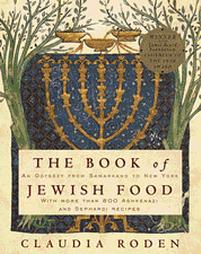
Syrian Jews (Arabic: يهود سوريون) are Jews who inhabit the region of the modern state of Syria, and their descendants born outside Syria. Syrian Jews derive their origin from two groups: from the Jews who inhabited the region of today’s Syria from ancient times (known as Musta’arabi Jews, and sometimes classified as Mizrahi Jews, a generic term for the Jews with an extended history in the Middle East or North Africa); and from the Sephardi Jews (referring to Jews with an extended history in the Iberian Peninsula, i.e. Spain and Portugal) who fled to Syria after the expulsion of the Jews from Spain (1492 CE).
There were large communities in Aleppo and Damascus for centuries, and a smaller community in Qamishli on the Turkish border near Nusaybin. In the first half of the 20th century a large percentage of Syrian Jews emigrated to the U.S., Central and South America and Israel. Most of the remaining Jews left in the 28 years following 1973, due in part to the efforts of Judith Feld Carr, who claims to have helped some 3,228 Jews emigrate; emigration was officially allowed in 1992. Today there are about 25 Jews in Syria, all of them living in Damascus. The largest Syrian Jewish community is located in Brooklyn, New York and is estimated at 75,000 strong. There are smaller communities elsewhere in the United States and in Latin America. Read More: > HERE <
Jewish Cuisine is the collection of cooking traditions of the Jewish people. It is a diverse cuisine that has evolved over many centuries, shaped by Jewish dietary laws (kashrut) and Jewish Festival and Sabbath traditions. Jewish cooking has also been influenced by the economics, agriculture, and culinary traditions of the many countries where Jewish communities have existed since Late Antiquity. Kashrut and holiday traditions provide unifying elements in the cuisine, while geographic dispersion has led to a diversity of styles. Read More: > HERE <
Claudia Roden, author of The Book of Jewish Food, has done more than simply compile a cookbook of Jewish recipes–she has produced a history of the Jewish diaspora, told through its cuisine. The book’s 800 recipes reflect many cultures and regions of the world, from the Jewish quarter of Cairo where Roden spent her childhood to the kitchens of Europe, Asia, and the Americas. Both Ashkenazi and Sepharidic cooking are well represented here: hallah bread, bagels, blintzes, and kugels give way to tabbouleh, falafel, and succulent lamb with prunes, which are, in turn, succeeded by such fare as Ftut (Yemeni wedding soup) and Kahk (savory bracelets).
The Book of Jewish Food: An Odyssey from Samarkand to New York: Interwoven throughout the text are Roden’s charming asides–the history of certain foods, definitions (Kaimak, for instance, is the cream that rises to the top when buffalo milk is simmered), and ways of preparing everything from an eggplant to a quince. In addition, Roden tells you everything you’ve ever wanted to know about Jewish dietary laws, what the ancient Hebrews ate, and the various holidays and festivals on the Jewish calendar. Detailed sections on Jewish history are beautifully illustrated with archival photographs of families, towns, and, of course, food. The Book of Jewish Food is one that any serious cook–Jewish and non-Jewish alike–would gladly have (and use often) in the kitchen. Buy this Book: > HERE <
From Publishers Weekly – As the biblical echo of the title indicates, this collection is as instructive and comprehensive as a textbook. Roden (Mediterranean Cookery, etc.) divides the territory in two parts: „The Ashkenazi World“ and „The Sephardi World.“ She chronicles the lives of Jews all over the world in short segments on unusual Jewish communities past and present, such as those of Salonika, Greece, and China. These sections, and the many other notes on subjects ranging from the New York Deli to salt herring are gems. Recipes are numerous and diverse: Yellow Split Pea Soup with Frankfurters, Pumpkin Tzimmes, Small Red Kidney Beans with Sour Plum Sauce, Cold Stuffed Vine Leaves, and Fish Balls in Tomato Sauce. Some highlights include the chapter on Sephardic breads (Algerian Anise Bread, North African Sweet Breads with Nuts and Raisins) and the one on Ashkenazic desserts (Mandelbrot, Hanukah Jam Doughnuts). All of this can be a little overwhelming at times (and, as Roden acknowledges in the introduction, many Jewish foods simply reflected the cuisines of the places where Jews were living rather than their own specific culture). Yet with few omissions (e.g., the instructions for making pasta specify rolling out the dough „as thin as possible“ but don’t explain how), Roden proves a practiced, reliable guide.
Copyright 1996 Reed Business Information, Inc.
- DIE VEDISCHE KOCHKUNST <
- Ayurvedische Ernährung < Jahreszeiten in Rythmen der Bioenergien <
- Meet Krishna Food, friends, fans at fb <
- DRBA Realm Buddhist Ass. – Food for Thought <
- Meet East Meets West Music, friends, fans at fb <
- Meet International Society of Hildegard von Bingen Studies at fb <
- Meet Council for a Parliament of the World’s Religions (CPWR)at fb <